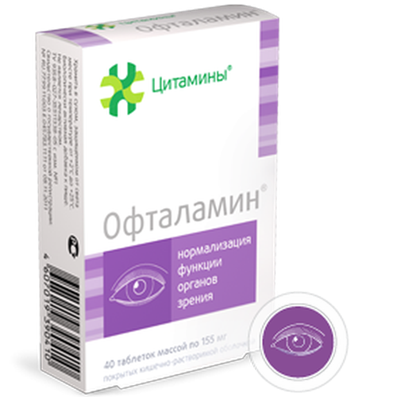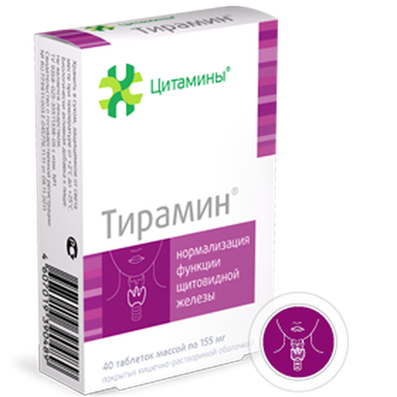Instruction for use: Dexa-Gentamicin
I want this, give me price
Active substance Gentamicin + Dexamethasone
ATX code D07CB04 Dexamethasone in combination with antibiotics
Pharmacological group
Glucocorticosteroids in combinations
Ophthalmic agents in combination
Nosological classification (ICD-10)
H00 Gordelum and Khalazion
Superficial infection of the eye
H01.0 Blepharitis
Blepharitis, Inflammation of the eyelids, Inflammatory diseases of the eyelids, Demodectic blepharitis, Superficial bacterial infection of the eyes, Superficial infection of the eye, Scaly blepharitis
H10 Conjunctivitis
Conjunctivitis infectious-inflammatory,Bacterial conjunctivitis, red-eye syndrome, Superficial infection of the eye, Chronic non-infectious conjunctivitis
H10.1 Acute atopic conjunctivitis
Allergic conjunctivitis, Allergic eye disease, Allergic conjunctivitis, Allergic conjunctivitis is caused by chemical and physical factors, Allergic rhinoconjunctivitis,Allergic inflammation of the eye, Spring catarrh, Spring keratitis, Spring conjunctivitis, allergic Conjunctivitis, Perennial allergic conjunctivitis,Exacerbation of pollen allergy in the form of Syndrome rinokonyunktivalnogo, Acute allergic keratoconjunctivitis, Acute allergic conjunctivitis,Superficial bacterial eye infections,rhinoconjunctivitis, Seasonal allergic conjunctivitis, Seasonal conjunctivitis, Sennoz, Chronic allergic keratoconjunctivitis, Chronic allergic conjunctivitis
H10.8 Other conjunctivitis
H10.9 Conjunctivitis, unspecified
Trahomny conjunctivitis, catarrhal conjunctivitis, Giperpapillyarny conjunctivitis, Non-infectious conjunctivitis, purulent conjunctivitis, Purulent conjunctivitis form, Year-round conjunctivitis, purulent conjunctivitis, Subacute conjunctivitis, Secondarily infected with conjunctivitis
H16 Keratitis
Adenoviral keratitis, Bacterial keratitis, Spring keratitis, Deep keratitis without epithelial damage, Discoid keratitis, Dendritic keratitis, Keratitis rosacea, Keratitis with destruction of the cornea, Superficial keratitis, Point keratitis, Traumatic keratitis, Superficial point keratitis
T88 Other complications of surgical and therapeutic interventions, not elsewhere classified
intravascular coronary angioplasty, Transurethral resection, Turbinektomiya, Removal of a tooth, cataract surgery, Removal of cysts, tonsillectomy, Removal of fibroids, Removing the mobile primary teeth, Removing polyps, Removing broken tooth, Removal of the uterus body, Removal of sutures, Urethrotomy, Fistula likvoroprovodyaschih ways, Frontoetmoidogaymorotomiya, Surgical infection, Surgical treatment of chronic limb ulcersm, Surgery, The surgery in the anal area, The surgery on the colon, Surgical practice, The surgical procedure, Surgical interventions, Surgery on the gastrointestinal tract, Surgical procedures on the urinary tract, Surgical procedures on the urinary system, Surgical intervention of the genitourinary system, Surgical procedures on the heart, Surgical manipulation, surgery, Surgery on the veins, Surgical intervention, Vascular surgery, Surgical treatment of thrombosis, cholecystectomy, Partial gastric resection, transabdominal hysterectomy, Percutaneous transluminal coronary angioplasty, Percutaneous transluminal angioplasty, Coronary artery bypass, tooth Extirpation, Extirpation of milk teeth, pulpectomy, pulsative cardiopulmonary bypass, tooth Extraction, teeth Extraction, cataract extraction, Electrocoagulation, endourological intervention, episiotomy, Etmoidotomiya, Complications after tooth extraction
Z100 * CLASS XXII Surgical practice
Abdominal surgery, adenomectomy, Amputation, Coronary angioplasty, Angioplasty of the carotid arteries, Antiseptic skin treatment for wounds, Antiseptic Hand, Appendectomy, atherectomy, Balloon coronary angioplasty, Vaginal hysterectomy, The coronary bypass, Interventions in the vagina and cervix, Interventions on the bladder, Intervention in the mouth, Restoration and reconstructive surgery, Hand hygiene of medical personnel, Gynecologic surgery, Gynecological intervention, Gynecological surgery, Hypovolemic shock during operations, Disinfection of purulent wounds, Disinfection of wounds edges, Diagnostic intervention, Diagnostic procedures, Cervical Diathermocoagulation, Long-surgery, Replacing the fistula catheters, Infection in orthopedic surgery, Artificial heart valve, cystectomy, Short-term outpatient surgery, Short-term operation, Short surgical procedures, Krikotireotomiya, Blood loss during surgery, Bleeding during surgery and in the postoperative period, Kuldotsentez, laser photocoagulation, laser coagulation, retinal laser coagulation, Laparoscopy, Laparoscopy in Gynecology, CSF fistula, Small gynecological operations, Small surgical procedures, Mastectomy and subsequent plastic, mediastinotomy, Microsurgical operations on the ear, Mukogingivalnye operation, suturing, Minor surgery, neurosurgical operation, Immobilization of the eyeball in ophthalmic surgery, testectomy, pancreatectomy, Perikardektomiya, The period of rehabilitation after surgery, The period of, convalescence after surgery, Percutaneous transluminal coronary angioplasty, Pleural thoracentesis, Pneumonia postoperative and posttraumatic, Preparation for surgical procedures, Preparation for surgery, Preparation of the surgeon's hands before surgery, Preparation of the colon for surgical procedures, Postoperative aspiration pneumonia in neurosurgical and thoracic surgery, Postoperative nausea, Postoperative bleeding, postoperative granuloma, postoperative shock, The early postoperative period, myocardial revascularization, Radiectomy, gastric Resection, bowel resection, uterine Resection, liver Resection, enterectomy, Resection of part of the stomach, Reocclusion of the operated vessel, Bonding tissues during surgical procedures, Removal of sutures, Condition after eye surgery, Condition after surgery, Condition after surgery in the nasal cavity, Condition after gastrectomy, Status after resection of the small intestine, Condition after tonsillectomy, Condition after removal of the duodenum, Condition after phlebectomy, Vascular surgery, Splenectomy, Sterilization of surgical instruments, Sterilization of surgical instruments, sternotomy, Dental surgery, Dental intervention in periodontal tissues, strumectomy, Tonsillectomy, Thoracic surgery, total gastrectomy, Transdermal
Z98 Other postoperative conditions
Description of dosage form
Ointment: white, with a yellowish tinge, translucent.
pharmachologic effect
Pharmacological action - anti-inflammatory, bactericidal, anti-allergic, antibacterial broad spectrum, glucocorticoid.
Pharmacodynamics
Combined drug, the effect of which is due to its constituent components. Has anti-allergic, anti-inflammatory and antibacterial action. Dexamethasone - GCS (glucocorticosteroids) - has a pronounced anti-inflammatory effect, the index of its relative anti-inflammatory activity is 30.
Gentamicin sulfate, an antibiotic of the aminoglycoside group, has a broad spectrum of action, is active against most Gram-negative and Gram-positive microorganisms (Pseudomonas aeruginosa, Escherichia coli, Proteus spp., Klebsiella spp., Serratia spp., Salmonella spp.). Moderately active against strains of Staphylococcus spp.
Pharmacokinetics
With topical application, dexamethasone penetrates well into the corneal epithelium and conjunctiva; While in the aqueous humor of the eye, therapeutic concentrations are achieved; With inflammation or damage to the mucous membrane, the penetration rate increases.
Gentamicin sulfate, when applied topically, is found in therapeutic concentrations in the corneal stroma, in the anterior chamber, vitreous humor for 6 hours. Gentamicin sulfate does not enter the systemic bloodstream through intact epithelium of the cornea.
Indication
Infections of the anterior part of the eye caused by the microflora sensitive to gentamycin (conjunctivitis, keratitis, blepharitis, barley);
Allergic processes in the anterior part of the eye, accompanied by bacterial infection;
Prevention and treatment of inflammatory phenomena in the postoperative period (cataract removal, antiglaucomatous operations).
Contraindications
Hypersensitivity to any of the components of this drug;
Keratitis caused by Herpes zoster (dendritic keratitis), chicken pox and other viral diseases of the cornea and conjunctiva;
Mycobacterial infections of the eyes;
Fungal diseases of the eyes;
Acute purulent diseases of the eyes with defeat of the corneal epithelium;
Corneal epitheliopathy;
Injuries and ulceration of the cornea;
Wearing contact lenses;
Increased intraocular pressure;
I trimester of pregnancy;
Children under 18 years of age (due to lack of data on efficiency and safety).
pregnancy and lactation
Until now, clinical trial data regarding the use of Dex-Gentamicin during pregnancy, lactation, and also in children are absent. However, the drug can be used in the II-III trimester of pregnancy in the event that the intended benefit to the mother exceeds the possible risk to the fetus.
Side effects
In rare cases, after pouring the ointment, an allergic reaction and a burning sensation are possible.
Prolonged use of the drug may cause secondary glaucoma and steroid cataracts, so when using the drug for more than 2 weeks, as well as in patients who have a history of glaucoma, it is recommended to regularly monitor intraocular pressure.
Possible the emergence of contact dermatitis, herpetic keratitis, corneal perforation in the presence of keratitis, fungal infection, increased manifestation of bacterial infection of the cornea, ptosis, mydriasis. When used after trauma, the cornea can lead to a slower healing.
In case of side effects, stop using the drug and contact the ophthalmologist as soon as possible.
Interaction
When combined with atropine, other holinoliticheskimi or mydriaticheskimi drugs may increase the level of intraocular pressure. With topical application, gentamicin is incompatible with amphotericin B, heparin, sulfadiazine, cephalothin and cloxacillin. Local application of these drugs together with gentamycin can lead to deposition of precipitates in the conjunctival cavity.
Dosing and Administration
In the conjunctival cavity.
A strip of ointment 1 cm long is placed 2-3 times a day.
During the application of Dexa-Gentamycin ophthalmic ointment, contact with the skin surface or conjunctiva should be avoided.
With the simultaneous use of several eye drugs, it is recommended that Dexa-Gentamicin ointment be placed not earlier than 15 minutes after the use of eye drops.
The duration of Dex-Gentamicin treatment usually does not exceed 2-3 weeks.
Overdose
When topical application of the drug Dexa-Gentamycin ophthalmic overdose is unlikely.
special instructions
Influence on the ability to drive vehicles and work with machinery. Immediately after pouring the eye ointment Dexa-Gentamycin, a short-term disturbance of visual acuity may occur, leading to a slowing of mental and physical reactions. Therefore, it is not recommended to apply the drug directly before working with mechanisms and driving vehicles. Within 30 minutes after the application, it is necessary to refrain from occupations requiring increased attention.
Form of issue
Ointment eye. In tubes of aluminum with a PE tip and a screw cap of 2.5 g. 1 tube in a cardboard bundle.
Conditions of leave from pharmacies
On prescription.
storage Conditions
At a temperature not higher than 25 ° C.
Keep out of the reach of children.
Shelf life
3 years. After opening - 4 weeks.
Do not use after the expiry date printed on the package.

 Cart
Cart





